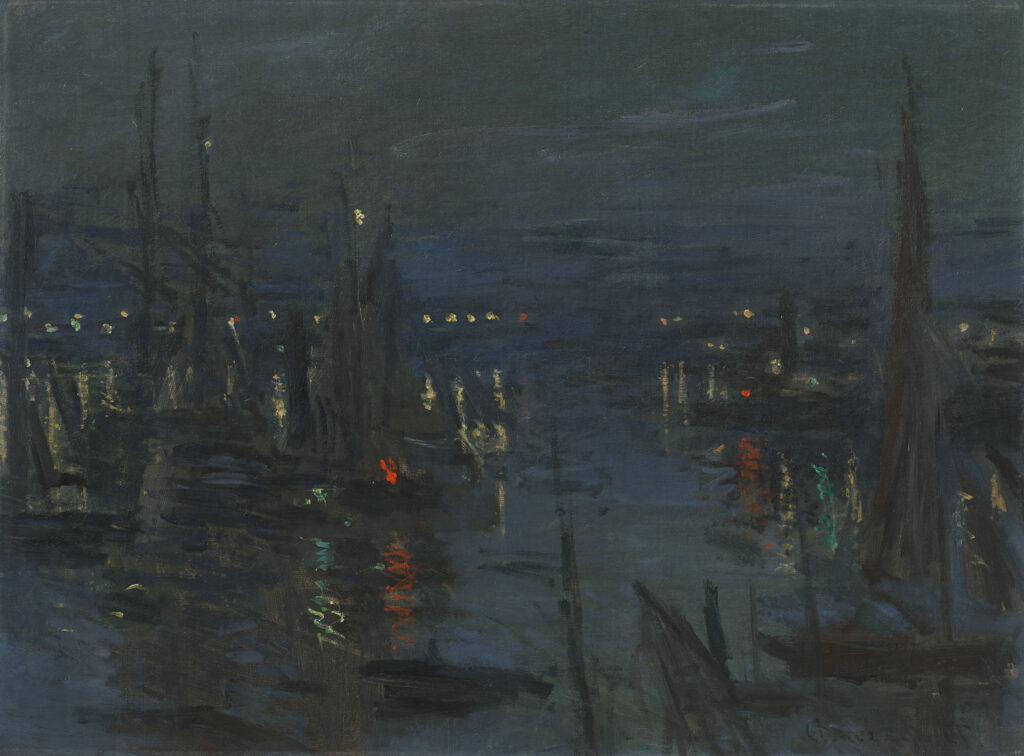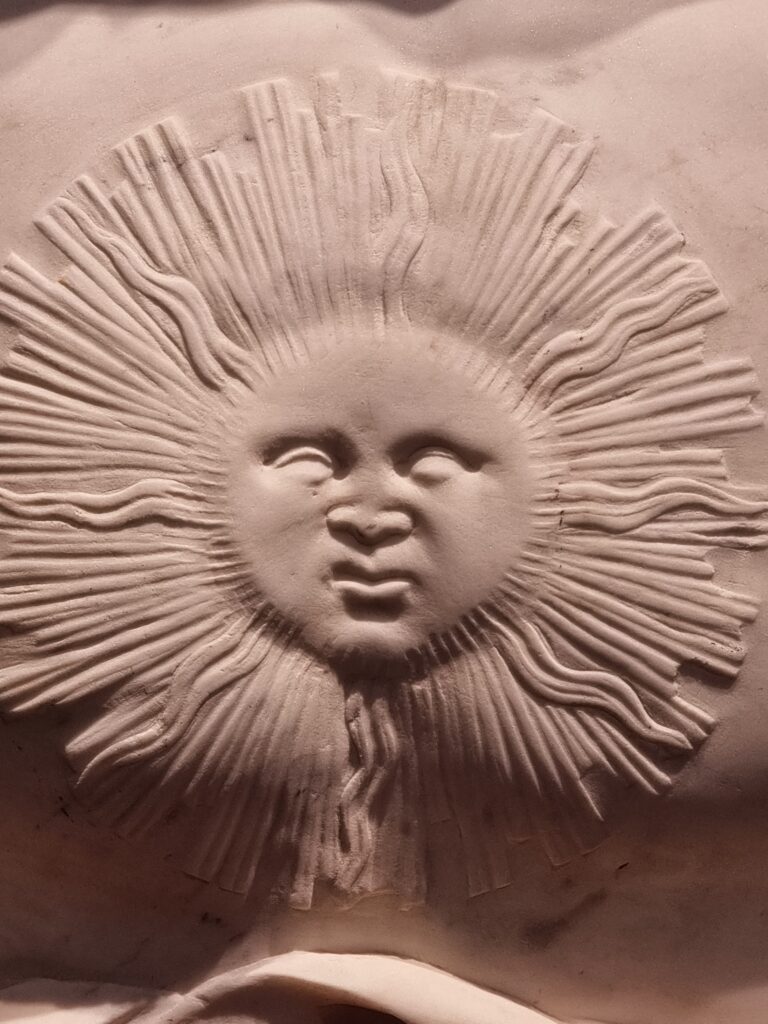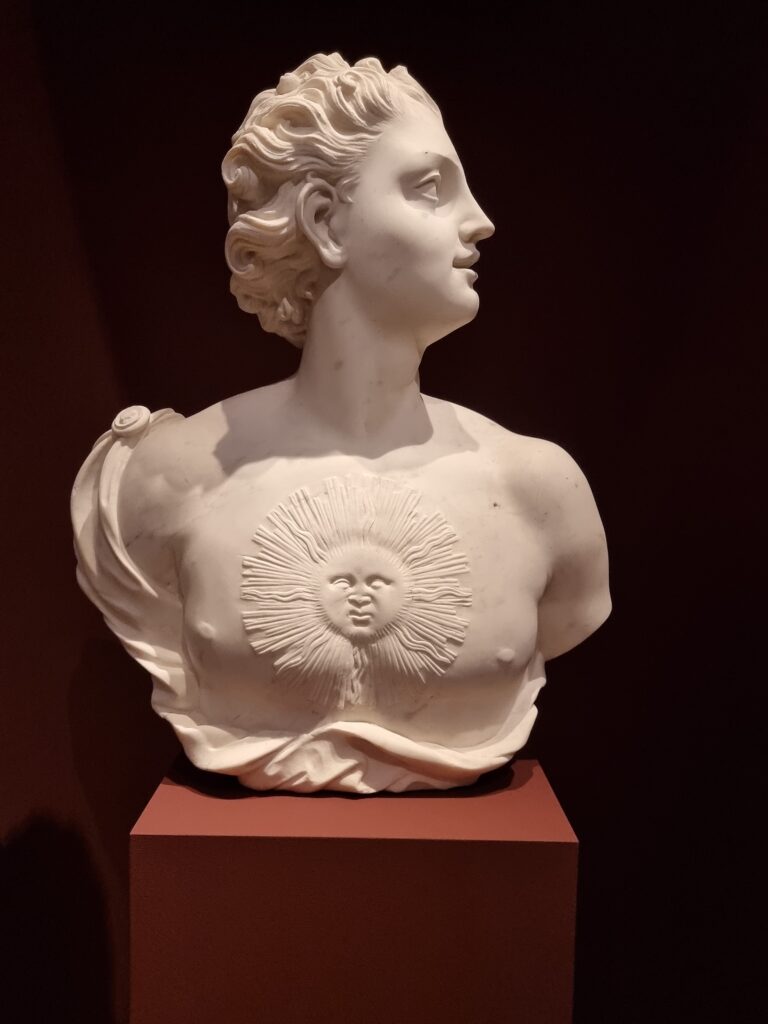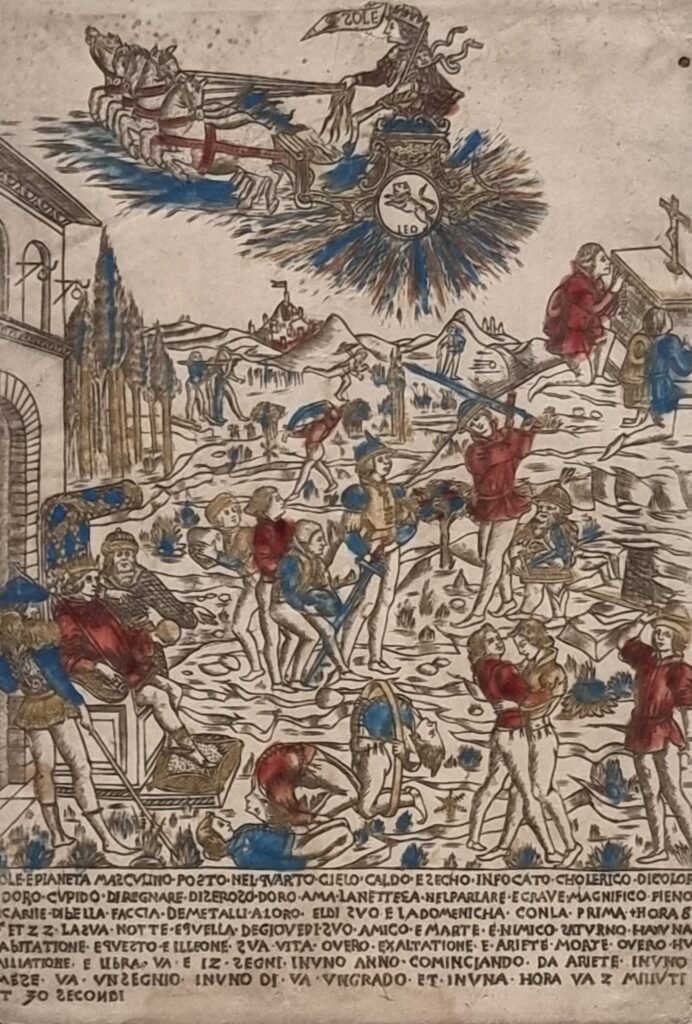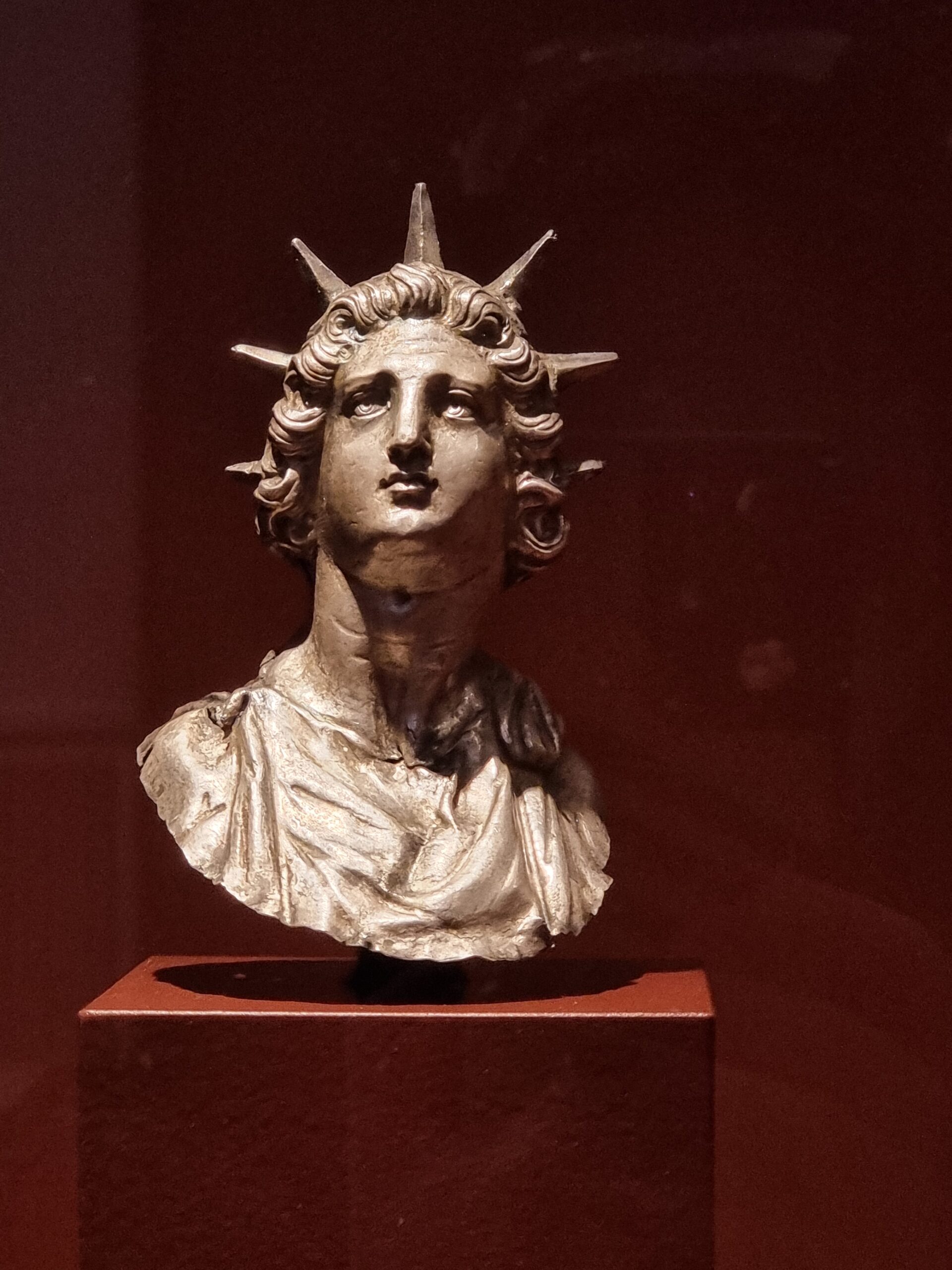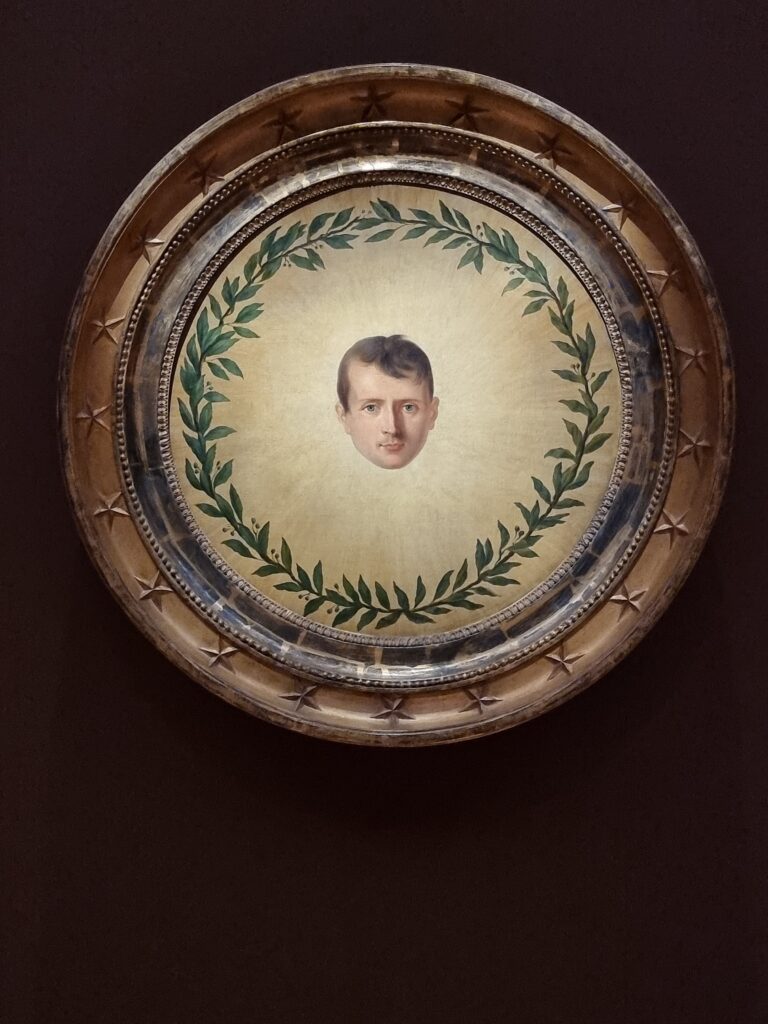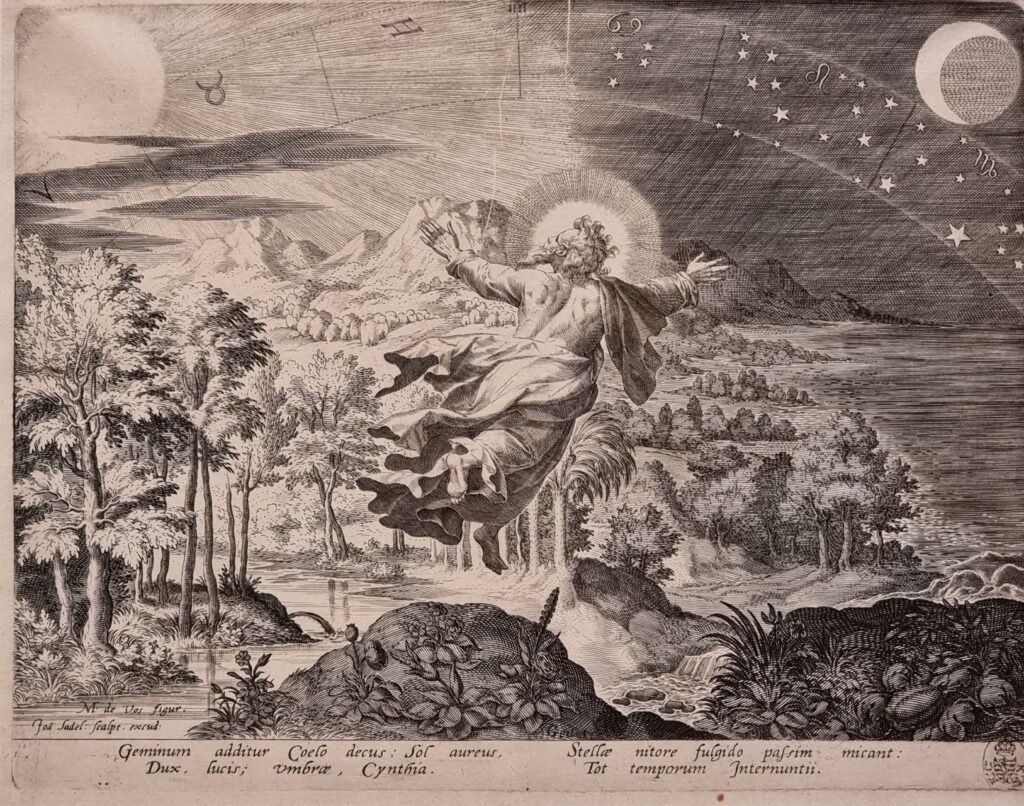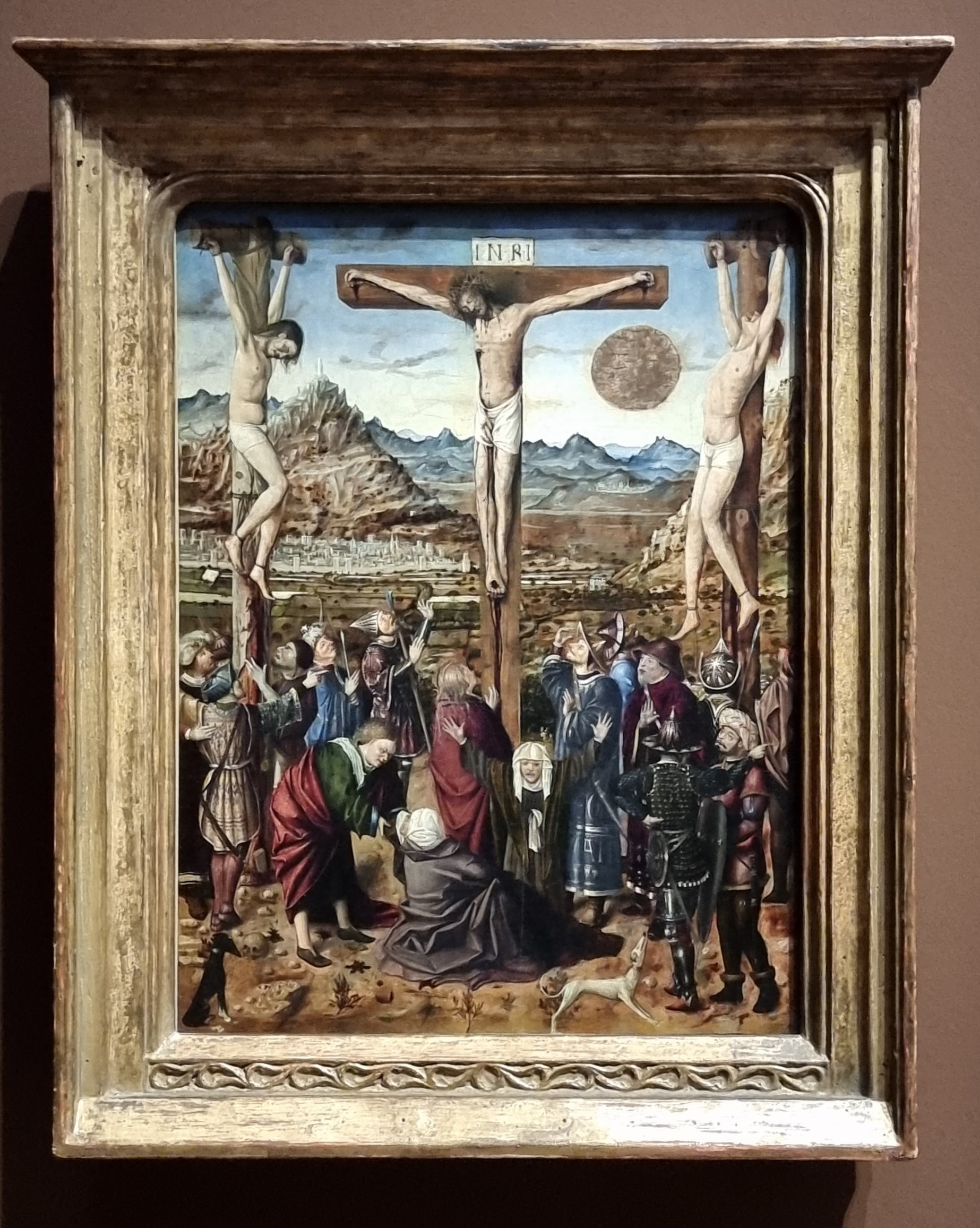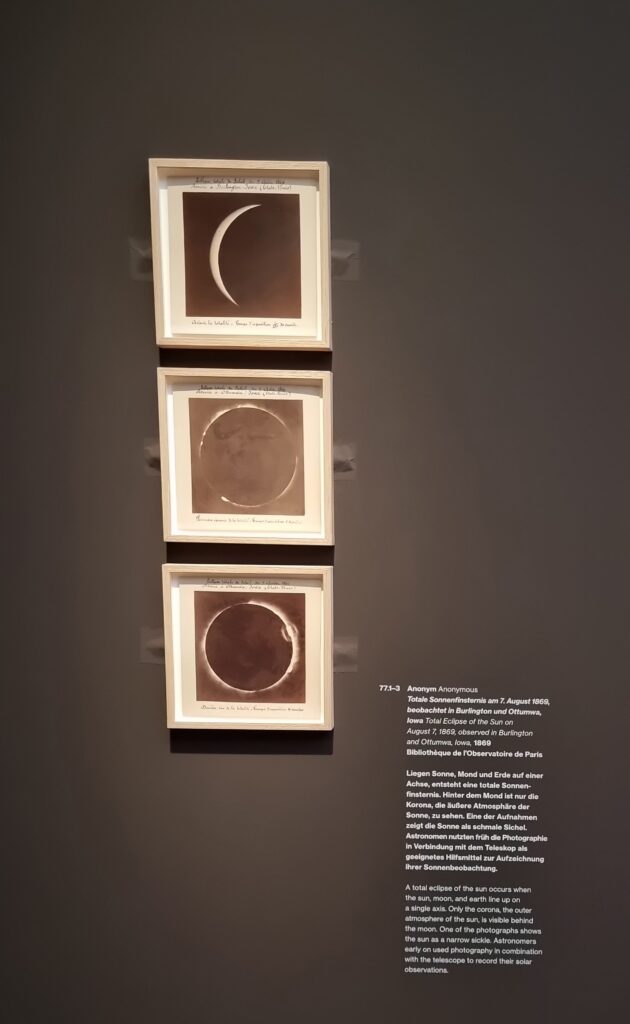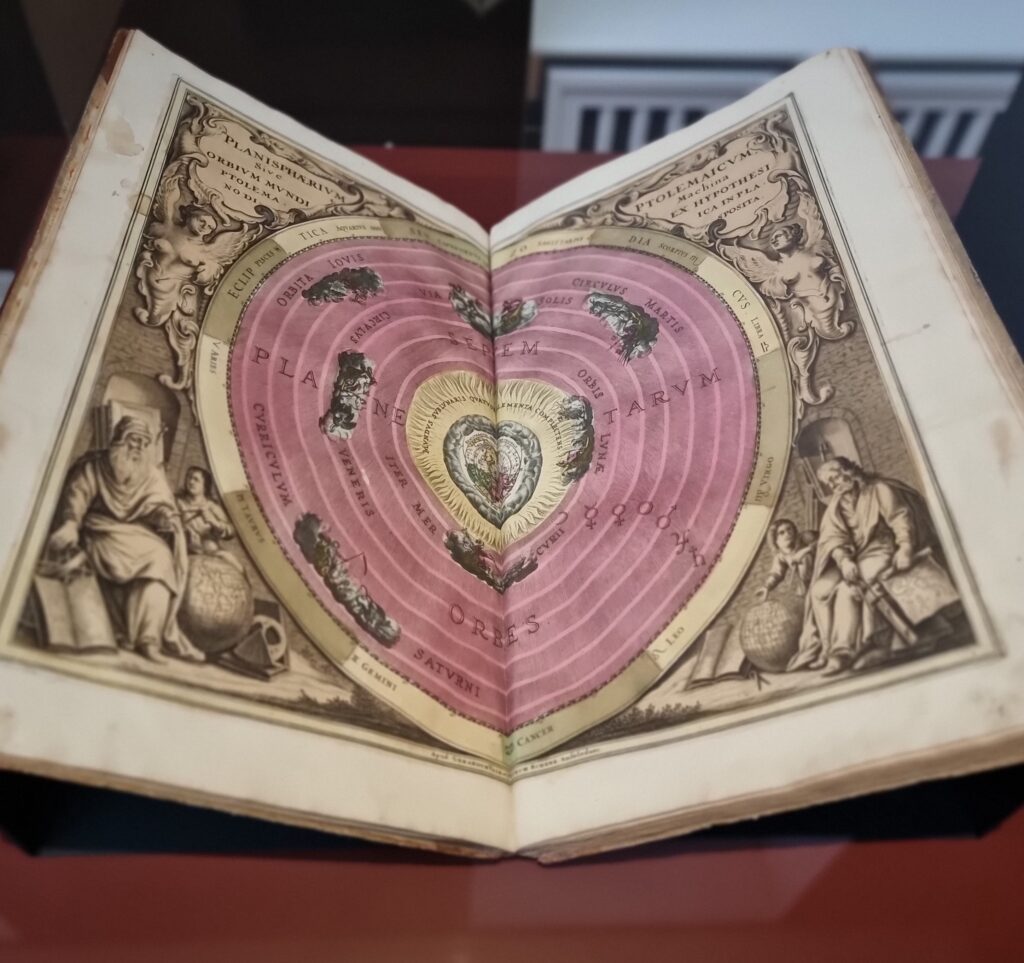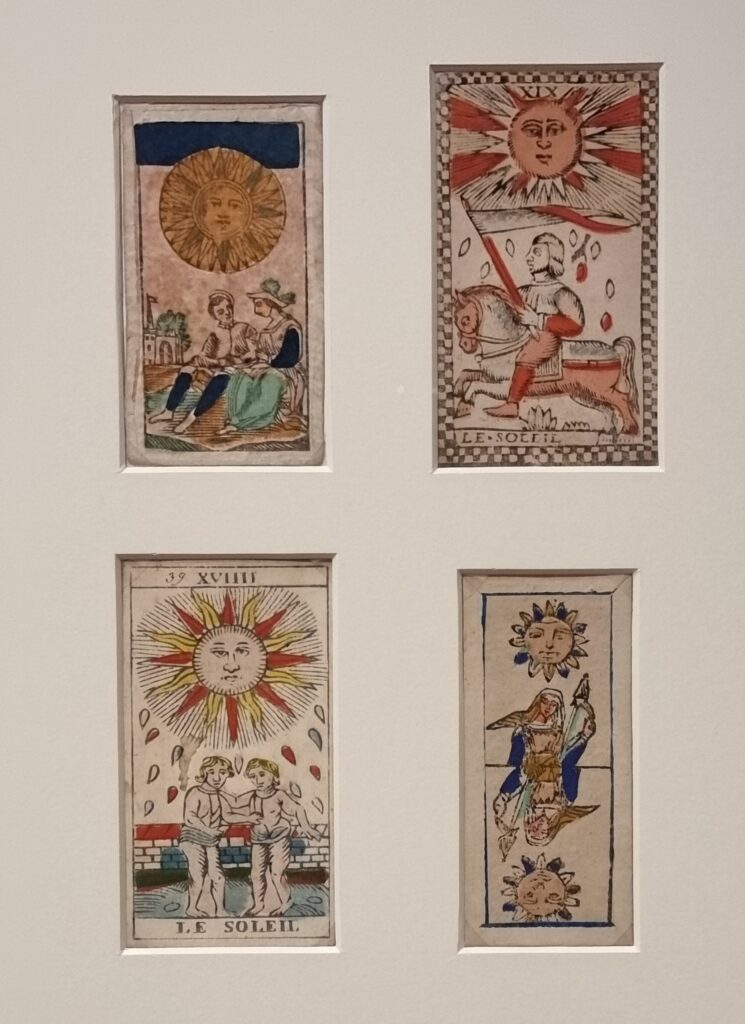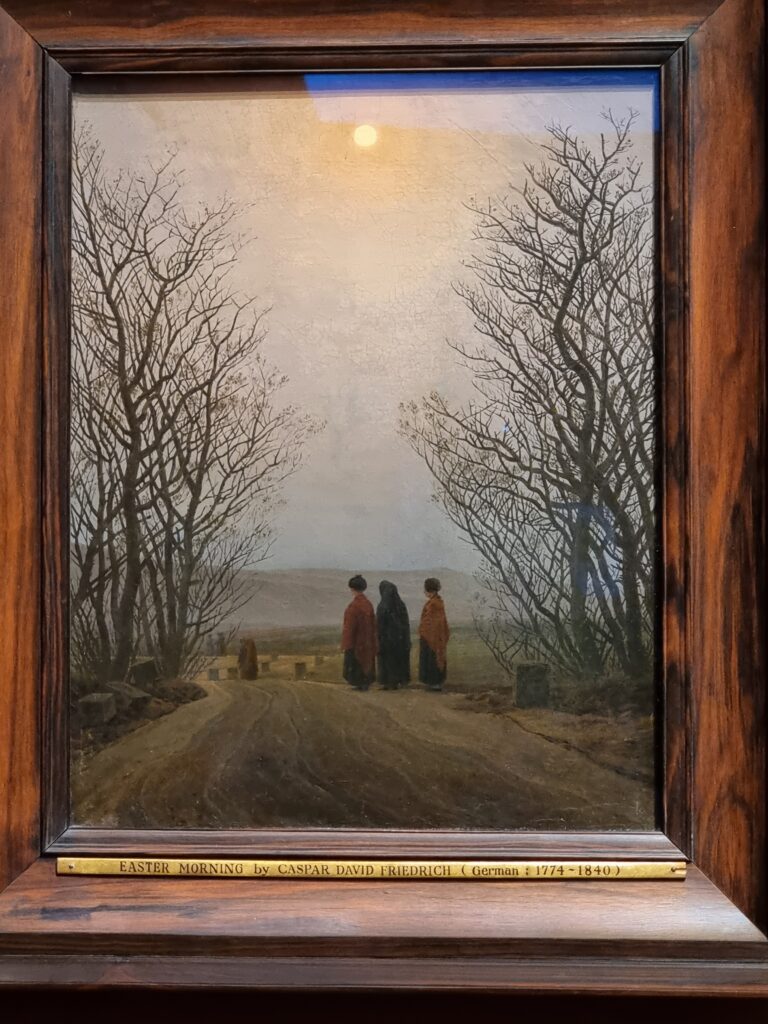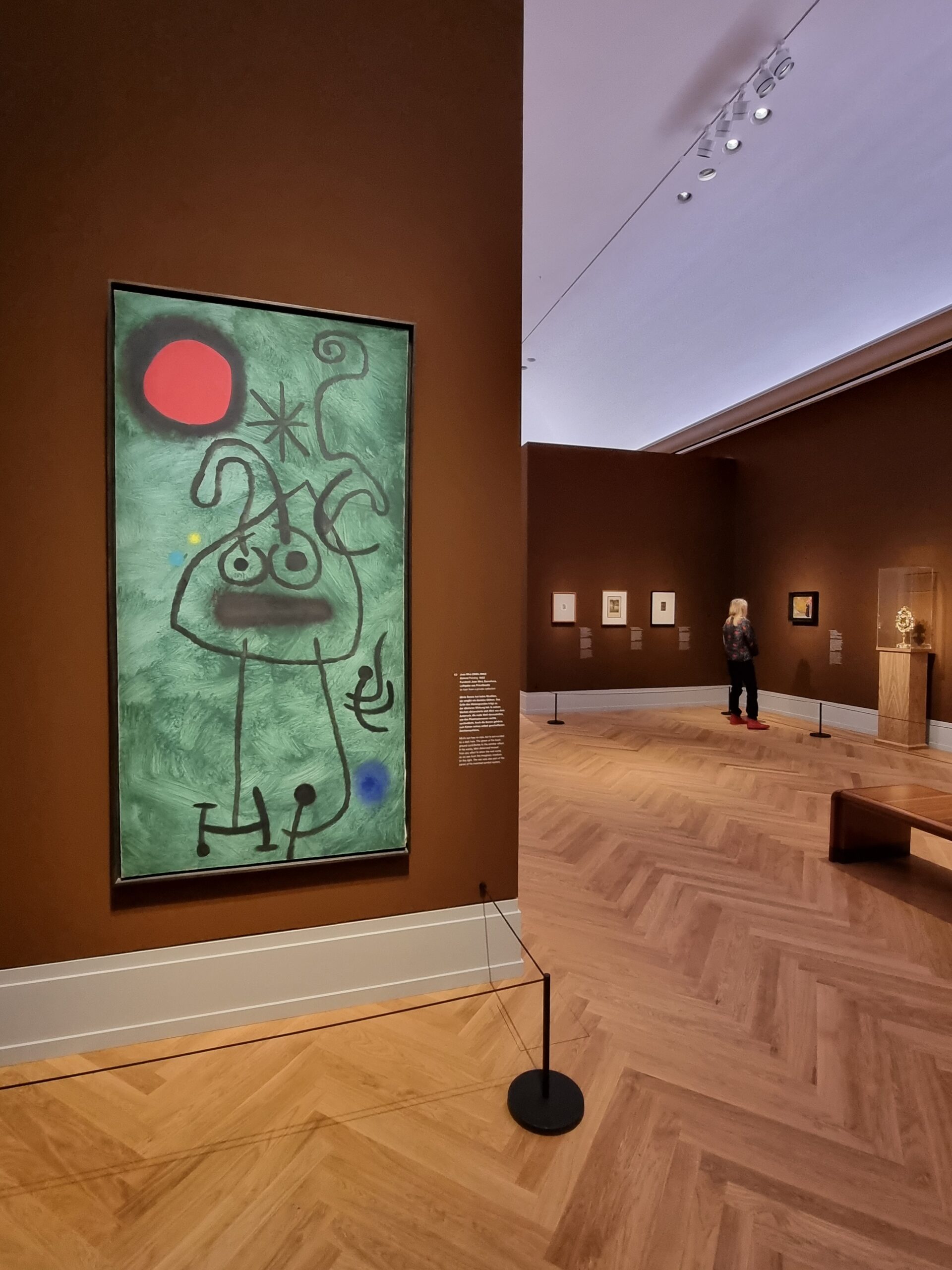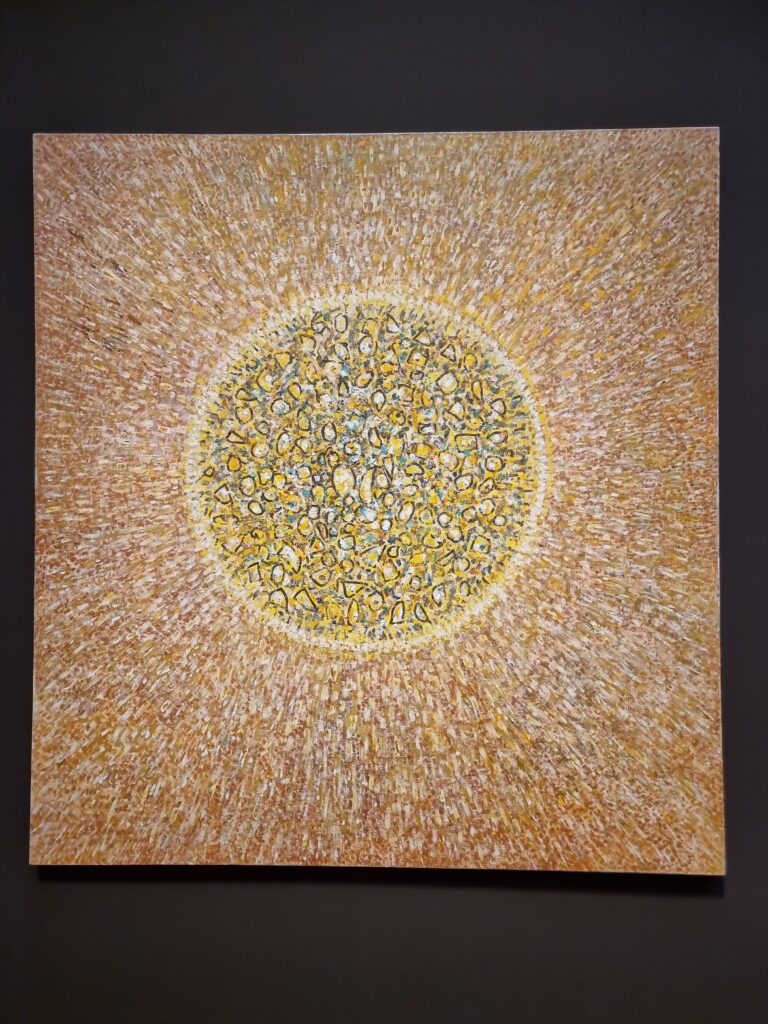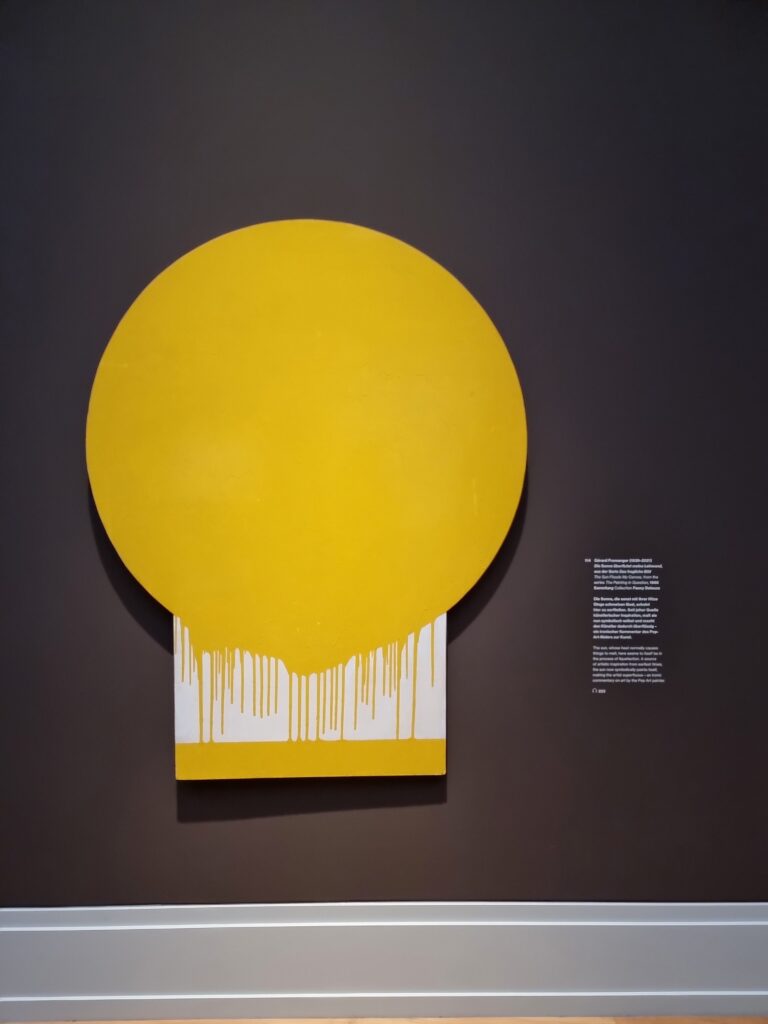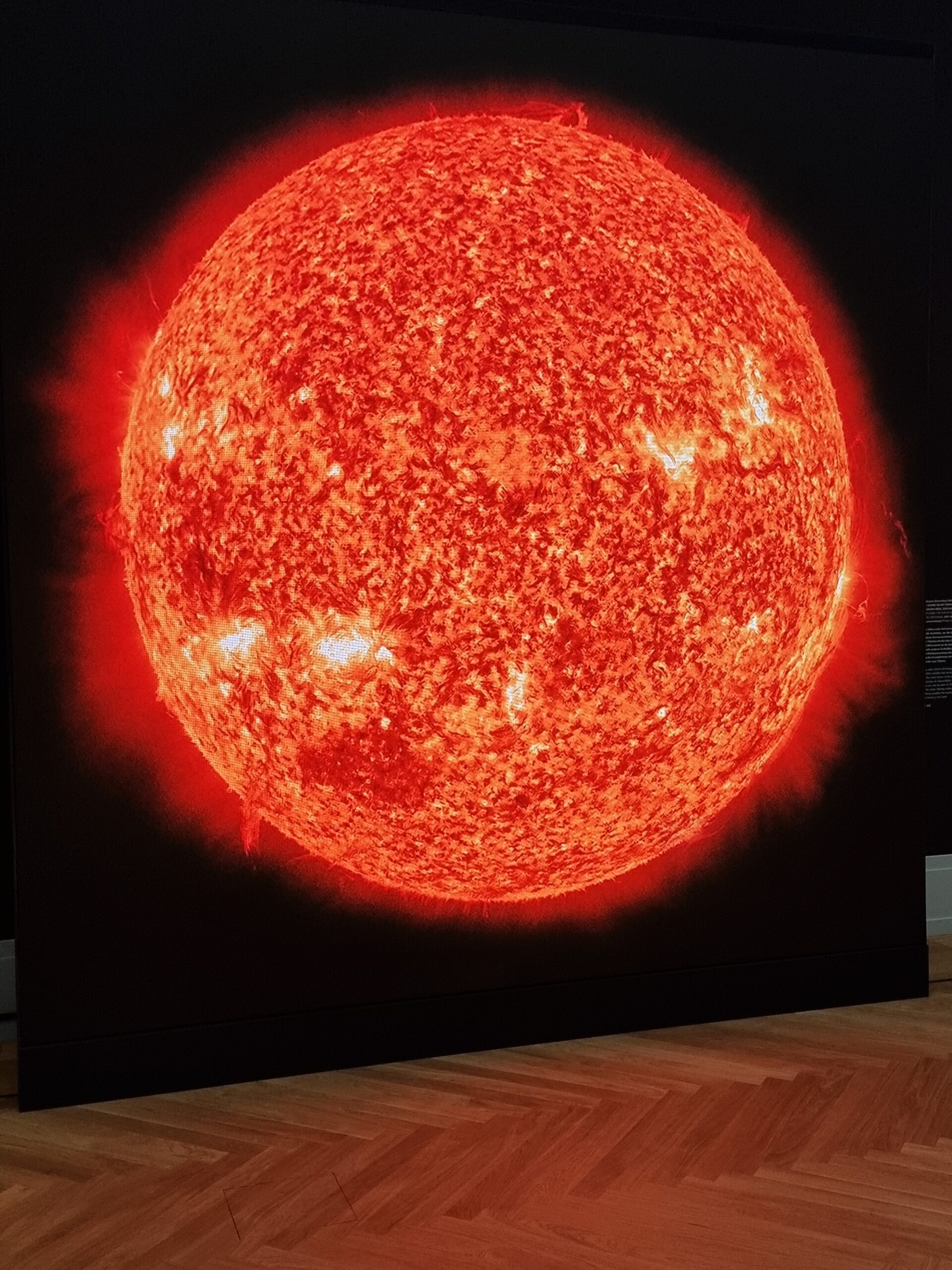
Museum Barberini Potsdam “Sun. The source of Light in Art”
he sun was worshipped on all continents of the earth, whether in Latin America, among the Mayas and Aztecs, where buildings such as the Pyramid of the Sun in Teotihuacán were erected in its honor, or in Egypt. The pyramids shape symbolized the sun's rays. The sun was closely linked to life, it was considered a sign of hope. Egypt's pyramids were aligned with the sun and, like an oversized sundial, could not only tell time but define the solar year and indicate the summer solstice. Osiris (the god of the underworld), closely associated with the afterlife, is depicted on countless inscriptions in connection with the setting sun. The sun "died" every evening, but the souls of the pharaohs were to connect with the setting sun before the sun rose again in the morning, a symbol of eternal life. The list could be effortlessly continued - well known and less known examples of buildings and representations of the sun abound in all cultures. That is why the Museum Barberini has decided to limit their exhibition exclusively to the influences of the sun in the art of Europe.
A small sensation and the highlight of the exhibition
Normally hanging in Paris, the painting is rarely if ever lent out and is the work that makes thousands and thousands of visitors worldwide make a pilgrimage to the Musée Marmottan Monet.
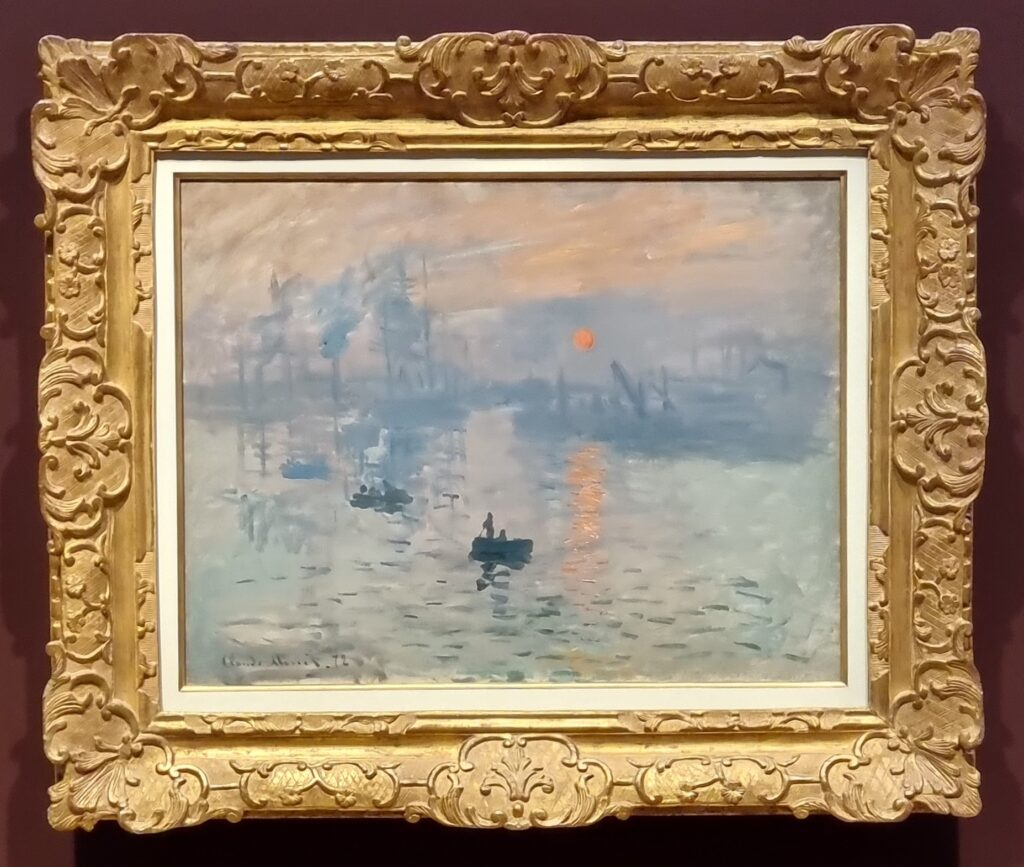
“Sun. Source of Light in Art” (February 25, 2023 – June 11, 2023)
If you currently look at the website of the Marmottan Museum, you will find an apology that Monet’s painting, which gave its name to an entire art movement, cannot be seen in the original for eight weeks – it is on loan. To whom? It is currently in the Museum Barberini, the museum where most of Monet’s works can be found outside Paris, so it is in “best company”. After 8 weeks it will go back to its ancestral place in Paris. The title? “Impression. Sunrise.” It forms the centerpiece of the exhibition “Sun. Source of Light in Art”.
What is special about this painting? In 1874, it was part of an exhibition in which Monet (and other artists such as Degas, Renoir and others who had previously been rejected by the Salon de Paris* exhibited their artworks. Since Monet had to give a title for the catalog and because of the sketchy representation did not want to call it “View of Le Havre”, he gave the title: “Sun. Impression.” The work caused a scandal at the time. It was the first work to capture a mood in this way. It was ridiculed and slated. Maliciously critics claimed that one could not even tell what was depicted. The critic Louis Leroy even wrote that the wallpapers showed more recognizable patterns than this picture. His article was titled “Exhibition of Impressionists” and was initially meant pejoratively. Subsequent artists, however, continued to claim this pictorial designation for their works, so that the initially arbitrary title of the Monet painting ultimately titled the works of an entire art movement. “Impression” as a representation of a moment.
*The Salon de Paris was a regular art exhibition initiated by King Louis IVX to present his taste or the courtly taste of the time. This exhibition was a magnet for artists or dealers as well as for the public, however, there was little understanding for new art trends, certainly not for the works of the Impressionists.
As a result of the verisimilitude of the time, fewer and fewer visitors came to the exhibition, so that it was even ended prematurely and the costs of the exhibition were not amortized. The painting was finally sold to Ernest Hoschedé, an art collector and art-loving industrialist and a friend of Monet. The price at that time was 800 francs (about 3000€), nobody was interested in this work. In 1878 it was resold to George de Bellio for only 210 francs (about 800€). He was one of the first collectors of impressionist paintings. The painting became known only after 1940 when, after de Bellio’s death, his daughter and her husband bequeathed it to the Musée Marmottan, where it was exhibited for the first time in 1946.**
**On October 27, 1985, there was a robbery at the Musée Marmottan in broad daylight, during which a total of 9 paintings were stolen, including Monet’s Sunrise. After 5 years of investigation, the painting was finally recovered in Corsica, where the thieves had tried to sell it to the Japanese mafia.
Sun representations since antiquity
In addition to Monet’s famous work, which gave its name to an entire style of art, the Museum Barberini has gathered about 130 exhibits, all of which revolve around the sun: Manuscripts, printed graphics, photographs and videos. More than 60 museums and private collections were involved in the exhibition, including the Rijksmuseum Amsterdam or the Louvre and the Albertina Vienna. The exhibition is divided into several main themes that underpin the long European tradition of depictions of the sun.
Myths and biblical meaning
Before the exhibition turns to the new orientation of painting through Monet’s Impressionist painting, the exhibition tour begins in antiquity and the representations of Helios and later Apollo as the sun god in human form. Numerous mythologies revolved around the sun. The ride in the sun chariot was considered a symbol of triumph. In the course of history, rulers such as Louis XIV (the Sun King) were therefore animated by these heroic representations to show themselves likewise godlike in this sunshine and to use the radiance of the sun as a symbol of their power, thereby demonstrating strength.
There are references to Icarus, who came too close to the sun, or to Phaeton, whose wantonness disturbed the course of the sun and who finally could only be stopped by Zeus and had to pay for it with his life. The light symbolism is found in representations of Christ and rarely also in the crucifixion by the representation of a solar eclipse. Always the sun is connected with the meaning of the works.
Sun, Cosmos, Astronomy & Esotericism
Until Monet’s groundbreaking depiction of the sun, the sun always served a purpose: it showed personified gods or rulers, clarified fates or ancient myths, showed Christian depictions or was attributed mysterious power by ancient civilizations. The sun was observed through telescopes, the solar eclipse was considered an evil omen…It was not until the landscape painting of the 17th century that the sun became a pure pictorial element and then later a stylistic device to convey a mood. In addition to Monet’s impressionist paintings, the exhibition features expressionist and abstract depictions of the sun – the works promise brilliant views! – Be sure to plan a visit to the museum!
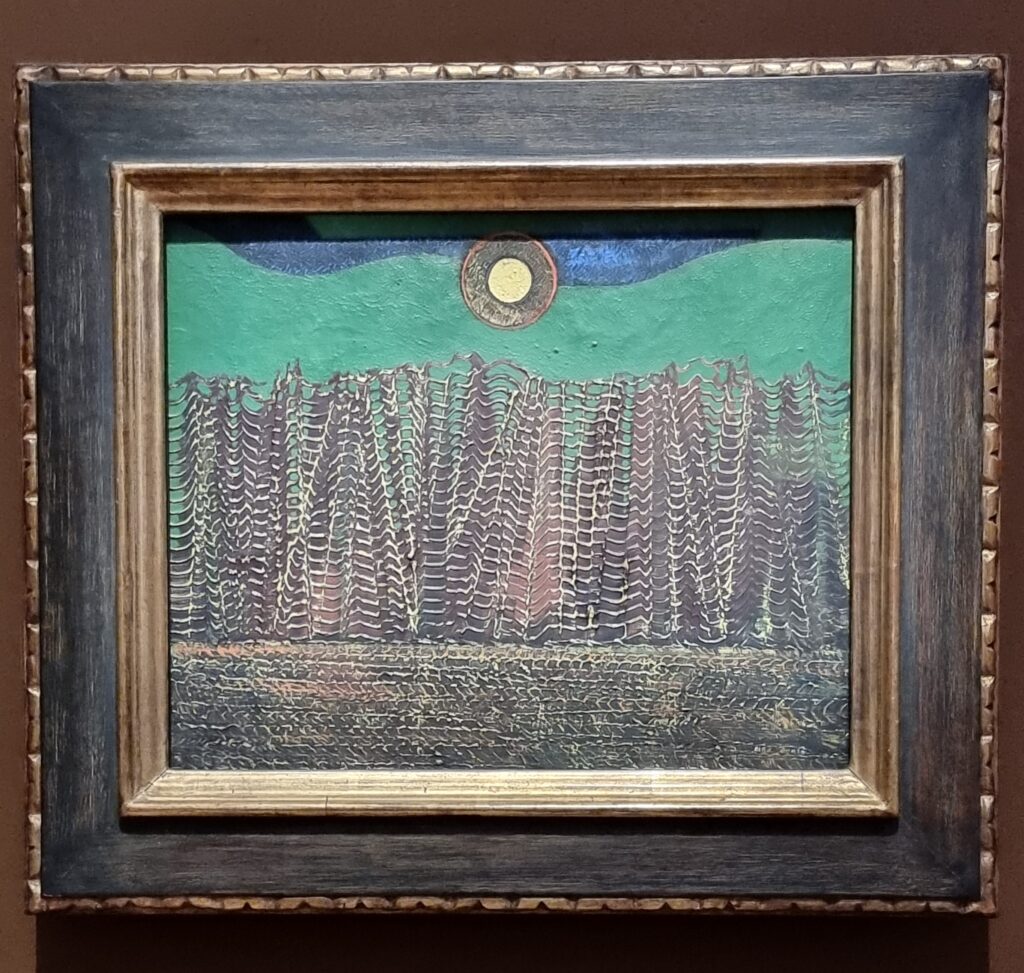
Representation of intense radiance of the sun through the power of colors
Where?
Museum Barberini, Potsdam (Alter Markt, Humboldtstraße 5-6)
Opening hours?
daily except Tuesdays, 10 a.m.-1 p.m.
Public guided tours?
During the week (except Tues) daily at 11 a.m. and 12 p.m., on weekends additionally at 3 p.m.
Every Sun at 10 am: Art Breakfast: a guided tour through the exhibition followed by breakfast in the MuseumsCafé
Cover: Digital video, Katharina Sieverding, Watching the Sun at Midnight (RED), SDA/NASA 2011-2014, 186 min, private collection ©Kischreport


